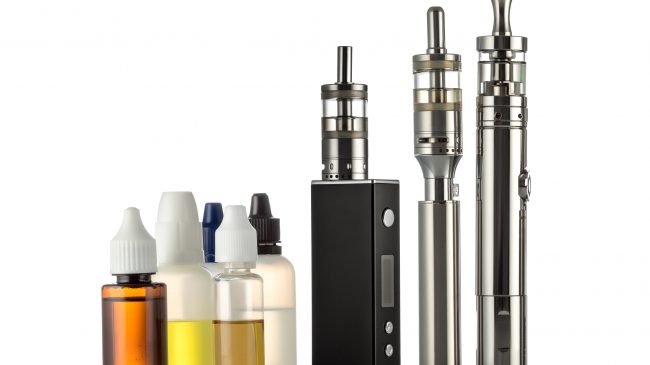The Centers for Disease Control and Prevention (CDC) has finally all but conceded that the deaths and lung illnesses being associated with vaping have nothing to do with legal nicotine e-cigarettes.
“For the first time, we have detected a potential toxin of concern, vitamin E acetate, from biological samples from patients,” said Dr. Anne Schuchat, principal deputy director of the CDC, today. The CDC examined lung tissue samples from 29 patients across 10 states and found all of them contained vitamin E acetate oil.
“These new findings are significant,” Schuchat said. “We have a strong culprit.”
Vitamin E acetate is not found in legal e-cigarettes. But it is often used by drug dealers to cut THC vape cartridges in an effort to increase their profits. “These findings provide direct evidence of vitamin E acetate at the primary site of injury within the lungs,” said Schuchat.
As has been the case for months, the vast majority of patients reported vaping THC. As it stands, there have been more than 2,000 cases of lung illnesses and 39 deaths associated with vaping. The most common factor among those who have fallen ill over the past three months is that they vaped black market THC products, often bought off the street or from friends. Unfortunately, the CDC has been consistently ambiguous on the question of whether or not commercially available e-cigarettes containing nicotine are responsible for the outbreak. It is clear they are not responsible.
Considering vaping has been around for more than a decade with tens of millions of users across the world, and no such outbreak had yet occurred, it should’ve been clear to the CDC that something other than nicotine was responsible. It should’ve been especially evident since the U.S. is the only country in the world where this outbreak is occurring—despite e-cigarettes being widely available in places such as Canada and Europe.
But the CDC persisted in saying it couldn’t rule out regular e-cigarettes as a cause of the outbreak. As late as Nov. 1, the CDC advised: “because the specific compound or ingredient causing lung injury is not yet known, and while the investigation continues, persons should consider refraining from the use of all e-cigarette, or vaping, products.”
The damage done by the CDC’s miscommunication can’t be overstated. In September, Reuters released a poll showing 63 percent of adults disagreed with the correct statement that “vaping is healthier than traditional cigarettes.” That number is up 16 percentage points from 2016.
As a result of the public confusion, vape sales have slowed and the decline in cigarette sales has weakened as some vapers chose cigarettes over e-cigarettes. At the same time, governors across the country rushed to ban the sale of flavored e-cigarettes, and in the case of Massachusetts, ban them outright. Walmart pulled e-cigarettes from its shelves.
Commenting on today’s announcement, Professor of Medicine at the University of British Columbia’s School of Population and Public Health Dr. Mark Tyndall noted that the CDC’s failure to inform the public allowed misinformation about vaping to spread.
“The CDC has too much experience and too many resources to simply write this off as a botched investigation,” he tweeted. “It was an opportunity for abstinence-based anti-smoking advocates who were clinging to the thinnest of arguments about the harms of vaping to say ‘I told you so.'”
And he is right, the CDC’s ambiguity on the nicotine did not go unnoticed. Groups dedicated to the prohibition of e-cigarettes seized on the recent tragic deaths to pressure FDA, Congress, and governors to crack down on vaping.
Erin Mills, a co-founder of Parents Against Vaping E-cigarettes (PAVE), tweeted numerous articles about the lung outbreak with no mention of its relationship to black-market THC products. On Oct. 24, for example, Mills tweeted a CDC update on cases of lung injuries and deaths, with the message: “#EpicFailFDA for choosing ProfitsOverKids via lax regulations supporting the # TobaccoIndustry’s WeaponsofMassAddiction OvEr the health safety and wellbeing #Americaskids.”
Similarly, the Campaign for Tobacco-Free Kids and the most well-funded anti-tobacco group in the country, the Truth Initiative, consistently highlighted the crisis, with no reference to THC or the black market.
This rampant opportunism was made possible, in part, by the CDC’s reluctance to give any endorsement to e-cigarettes as a useful tool for smokers trying to quit smoking and its failure to give the public clarification that vaping legal nicotine products was highly unlikely to be causing the deaths and lung illnesses being associated with vaping.

